Essenstial Vietnamese New Year's Food
Vietnamese people have a long-standing tradition of saving and resourcefulness, often reflected in their regular meals, which typically include rice accompanied by a main dish (such as meat or fish), a vegetable dish, and a bowl of soup. While Vietnamese cuisine may have once been humorously referred to as "food for peasants," this sentiment changes dramatically during the Tet holiday. During these celebrations, Vietnamese families indulge in more elaborate and protein-rich dishes.
Below are some of the most typical foods found in Vietnamese Tet holiday celebrations:
Banh Chung/Banh Tet
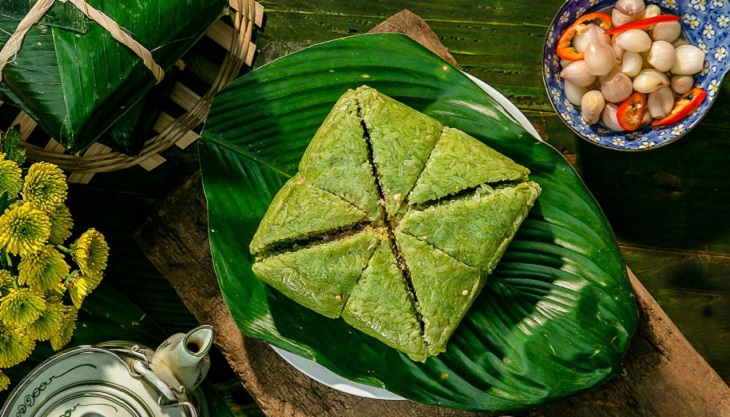 Photo @dienmayxanh.com
Photo @dienmayxanh.com
Banh Chung (steamed square cake) and its Southern counterpart, Banh Tet, are unique to Vietnam’s Tet holiday, although other countries such as China, Japan, Korea, Singapore, and Taiwan also have their own versions of this celebration. Banh Chung consists of glutinous rice, mung beans, and pork, along with other ingredients, all wrapped in green leaves (typically banana leaves). This dish symbolizes the Earth and is attributed to Prince Lang Lieu of the Hung Kings dynasty. Banh Chung is particularly popular during Tet due to its durability; it can last for days without refrigeration, remaining at room temperature for nearly a month.
Gio/Cha
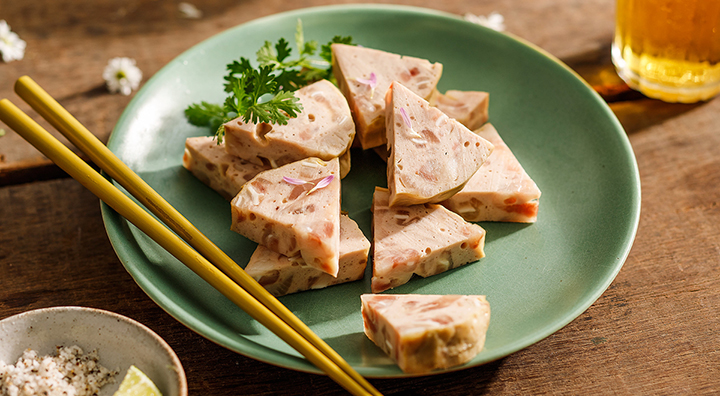 Photo @giatruyenfood.vn
Photo @giatruyenfood.vn
Gio Cha (Vietnamese ham or sausage) is another essential food during Tet, often served alongside Xoi (sticky rice) and Banh Chung. The two are distinct; Gio is boiled while Cha is deep-fried. Gio is crafted from lean meat seasoned with fish sauce, wrapped in leaves, and boiled for hours, while Cha is made from lean pork and fried. Unlike Cha, which only lasts a few days, Gio can remain edible for a month due to its protective wrappers. Various types of Gio include Gio Lua (made from pork), Gio Ga (made from chicken), and Gio Bo (made from beef). These dishes are enjoyed not only during Tet but throughout the year.
Xoi (sticky rice) is another pivotal component of the Tet holiday, as it is often included in meals honoring ancestors. Xoi is a staple food for Tet and comes in various forms, including Xoi Lac (sticky rice with peanuts), Xoi Do Xanh (sticky rice with mung bean), and Xoi Gac (sticky rice made with the gac fruit). Xoi Gac is particularly cherished for its vibrant red color, symbolizing good luck and prosperity for the new year. Sticky rice is commonly paired with Gio Cha or served with boiled chicken during Tet meals. It can also accompany Che (sweet soup) as a dessert.
Ga Luoc
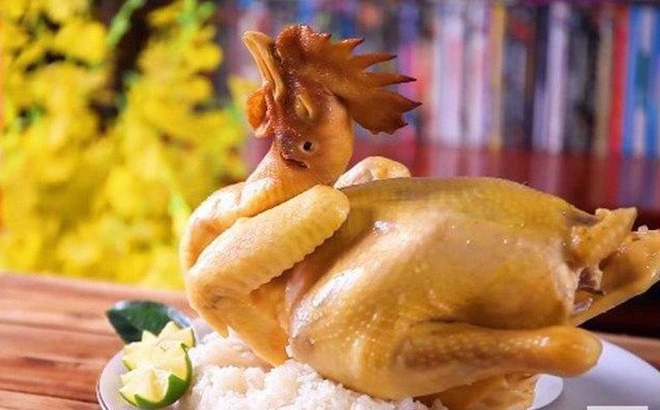 Photo @thoidai.com.vn
Photo @thoidai.com.vn
Thit Ga (boiled or steamed chicken) holds significant importance in Tet cuisine, as all tribute meals for ancestors must include this dish, served whole or chopped. Chicken during Tet is typically boiled and sliced, though some families may opt for roasted or fried chicken as a modern adaptation. Boiled chicken is traditionally accompanied by sliced lemon leaves and a salt-and-pepper sauce. In many households, the bones and leftover parts of the chicken are also used to prepare broths for soups.
Mut Tet
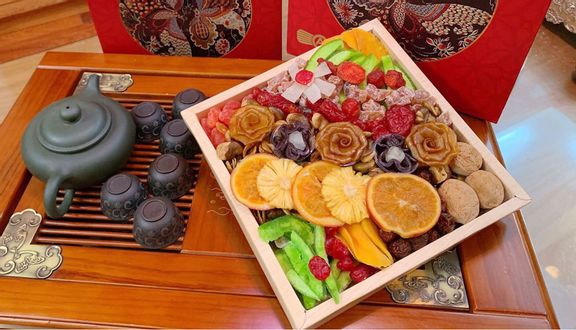 Photo @foody.vn
Photo @foody.vn
Mut Tet (Tet jam) is not typically served as a meal during the holiday but is more of a snack offered to guests. It is frequently presented in beautiful boxes placed on living room tables, allowing hosts and visitors to enjoy it while conversing over tea. Unlike Western jams, which are usually liquid and served with bread, Vietnamese jam comes primarily in a dry form, consisting of dried fruits and seeds (such as pumpkin seeds, sunflower seeds, and watermelon seeds). This once-a-year assortment provides a wide variety of flavors, including ginger, carrot, coconut, pineapple, pumpkin, lotus seed, star fruit, and sweet potato. While cakes and sweets have begun to replace jam during the Tet period, many people still hold a fondness for this traditional treat, which remains a reflection of Vietnamese culture.
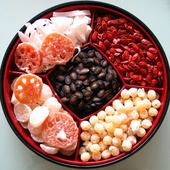
Vietnam's Most Common Seeds & Nuts For New Year
During Tet, every family in Vietnam prepares a special tray of snack to offer guests, containing a variety candies, biscuits, jam, fruits; and roasted nuts are indispensable components off the tray.
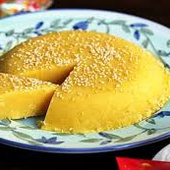
Mung Bean Pudding - Vietnamese Che Kho
To many Hanoian generations, mung bean pudding has become a familiar dish which always presents on the ancestors’ altar at New Year’s Eve.
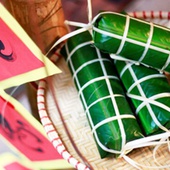
Bánh Tét - Essential to Tet in the South of Vietnam
Banh Tet, a representative cake in the South Vietnam, can be easily found at any house during Tet.











